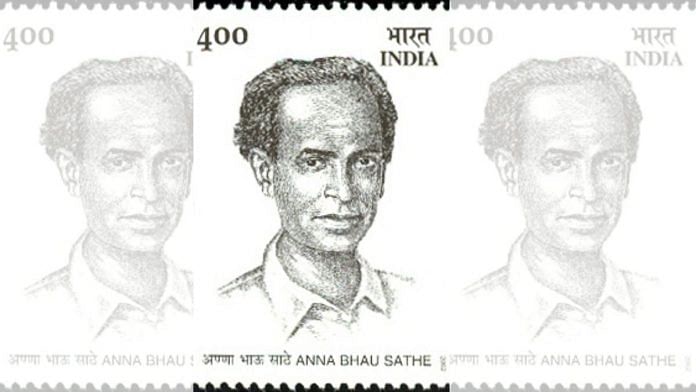Mumbai: Maharashtra Deputy Chief Minister Devendra Fadnavis will unveil a statue of social reformer and Marathi poet-writer Annabhau Sathe in Moscow Wednesday.
Fadnavis left for Russia early Tuesday, along with Maharashtra assembly Speaker Rahul Narwekar and Indian Council for Cultural Relations president Dr Vinay Sahasrabuddhe.
The unveiling ceremony will take place at the Margarita Rudomino All-Russian State Library for International Literature, followed by the dedication of an oil painting portrait of Sathe to the Indian embassy in Moscow.
Sathe is one of few Indian writers popular in Russia as he spent part of his life there and because his writings have been translated into Russian. He was influenced by the communist ideology and is often known as the ‘Maxim Gorky of Maharashtra’, having been inspired by the Russian writer-activist’s work, as well as the Russian Revolution.
Popularly known as “Lokshahir” Annabhau Sathe, he passed away in 1969.
“Annabhau Sathe was a freedom fighter and a great Marathi litterateur. He had spent months in Russia. (His) many works are translated in Russian,” Dr Sahasrabuddhe said while interacting with mediapersons before the delegation left for Russia.
Fadnavis, who is also expected to hold an interaction with the Indian diaspora there, said Sathe’s work shows “his struggles and sacrifice for the uplift of the poor, backward and oppressed sections of society”.
“Unveiling his statue and dedicating the portrait in Moscow is itself a great honour for all of us in Maharashtra. It is both historic and a moment of pride,” he added.
The statue had been installed at Moscow’s state library for the past couple of years, but will be formally unveiled now.
The unveiling is part of events being held to mark 75 years of Indian Independence, and to celebrate the India-Russia relationship, Dr Sahasrabuddhe said.
Also read: Raj’s saffron shawls, Sena’s ‘imitation’ barbs: It’s Thackeray vs Thackeray in Maharashtra again
The life and work of Annabhau Sathe
Born as Tukaram Bhaurao Sathe on August 1, 1920, to a Dalit family in Sangli district’s Wategaon village, the social reformer had to face oppression early in life, and was inspired to read and write. Sathe’s family shifted to Mumbai in 1930 where he worked as a hawker and porter.
He soon got actively involved in social gatherings and agitations, formed the Dalit Yuvak Sangh and started writing on workers’ strikes and agitations. He went on to contribute extensively to the Ambedkarite movement, as well as to Indian literature.
He began writing in his twenties and has to his credit 35 novels, 12 film screenplays and 11 ballads in Marathi, and a total of 104 works in various genres. The prominent Dalit novel in Marathi Fakira (1959) is among his best-known works and bagged the state government’s top literary award in 1961.
Some of Sathe’s other notable works include Stalingradcha Powada, Majhi Maina Gavavar Rahili, and a travelogue titled Majha Russiacha Pravas (My Travel to Russia). Another notable work Bangalchi Hak (Bengal’s Call) on the Bengal famine was translated into Bengali. It was later performed at London’s Theatre Royal.
Sathe used folk music like ‘powada’ (ballad) and the ‘lavani’ folk dance of Maharashtra to further popularise his work. In 1939, he wrote his first ballad, Spanish Powada.
In 1943, he was part of the process that led to the formation of the Indian People’s Theatre Association and became its national president in 1949.
Early in life, Sathe was deeply influenced by Marxism, and spent some time in Russia. His writings were often inspired by the Russian Revolution and the communist ideology.
He was also part of the Samyukta Maharashtra Movement along with communists and socialist leaders such as S.A. Dange, S.M. Joshi, Prabodhankar Thackeray and Amar Shaikh.
Sathe came to be known for dedicating his life and work to the uplift of the oppressed classes, as he participated in agitations, raised his voice against injustice through street protests and strived for higher wages and dignity of labour.
(Edited by Nida Fatima Siddiqui)
Also read: Moral, political & ideological questions on Maharashtra: 1st is simplest to answer, 3rd trickiest



